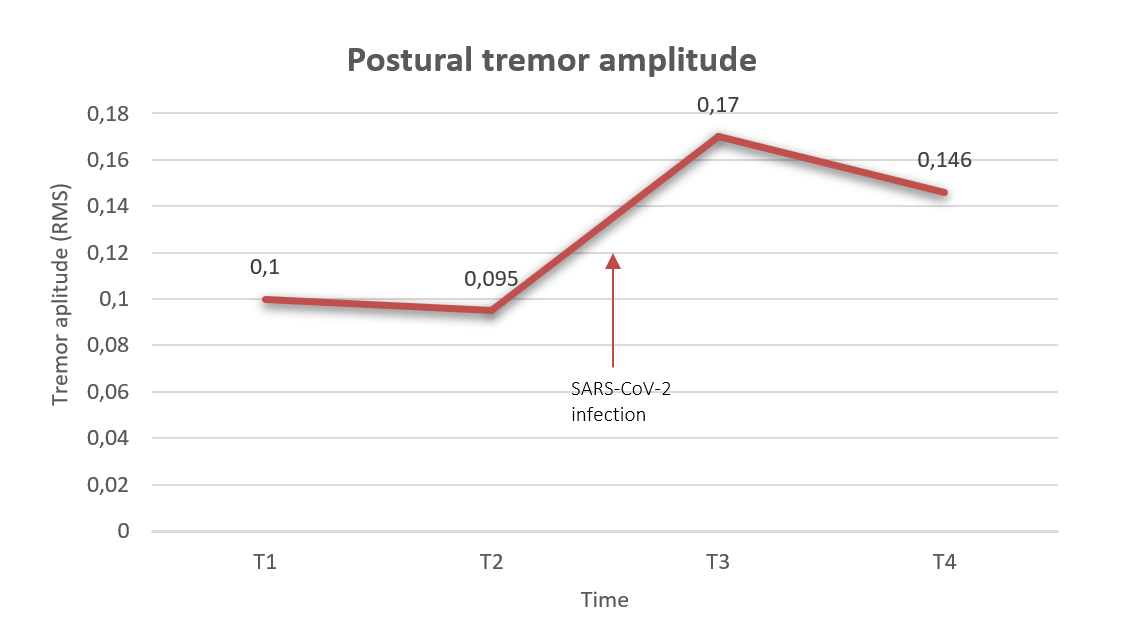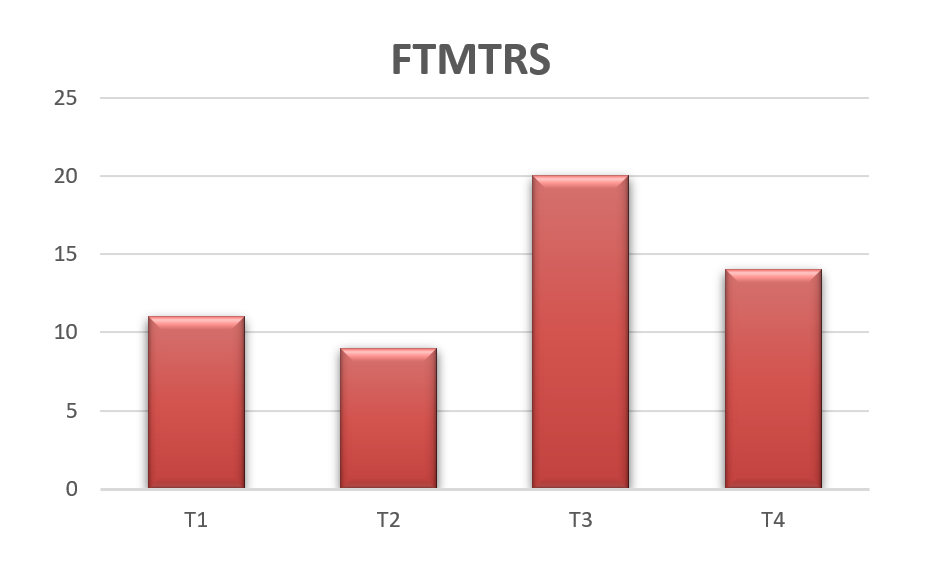Category: Tremor
Objective: To follow up on clinical and kinematic tremor features as well as non-motor symptoms, neuroimaging, and laboratory changes in a patient diagnosed with essential tremor one-year after SARS-CoV-2 infection.
Background: We recently reported the case of a 60-year-old man diagnosed with essential tremor who complained of significant tremor worsening after asymptomatic SARS-CoV-2 infection. A pre-infection assessment allowed us to demonstrate a temporal relationship between infection and tremor worsening, which probably reflects a causal link. We concluded that tremor worsening was likely due to virus-induced immune-mediated functional alterations in cerebellar networks.
Method: Clinical and kinematic assessment of tremor features, i.e. postural, kinetic, and rest tremor, as well as cognitive and psychiatric evaluation by means of clinical scales were performed one year after SARS-CoV-2 infection (1-year follow up). The data were compared with those collected 4 years and 4 months before the infection and 1 month after the infection. Brain magnetic resonance imaging (MRI) and blood laboratory exams were also obtained before and after infection.
Results: At 1-year follow up we observed a reduction in postural tremor amplitude (GRMS^2) as compared to 1 month after infection (average percentage variation -14%). The value, however, was still significantly higher than before SARS-CoV-2 infection (average percentage variation +54%). We found no significant variation in tremor frequency (Hz). Also, measures of kinetic tremor and rest tremor did not change at 1-year follow up. Finally, psychiatric, and cognitive assessment, brain MRI and blood laboratory exams did not significantly differ from previous evaluations.
Conclusion: After the initial worsening due to SARS-CoV-2 infection, we observed only a partial recovery one year after infection. Our observation suggests permanent virus-induced brain damage in key structures responsible for tremor generation, especially the cerebellum and its connections. However, longer follow up may be necessary to better define the effects of SARS-CoV-2 infection in patients with essential tremor.
References: 1. Passaretti M, De Biase A, Paparella G, Angelini L, Cannavacciuolo A, Colella D, Berardelli A, Bologna M. Worsening of Essential Tremor After SARS-CoV-2 Infection. Cerebellum. 2023 Feb;22(1):155-158. doi: 10.1007/s12311-022-01366-8. Epub 2022 Jan 6. PMID: 34989982; PMCID: PMC8732967.
2. Angelini L, Paparella G, De Biase A, Maraone A, Panfili M, Berardelli I, Cannavacciuolo A, Di Vita A, Margiotta R, Fabbrini G, Berardelli A, Bologna M. Longitudinal study of clinical and neurophysiological features in essential tremor. Eur J Neurol. 2023 Mar;30(3):631-640. doi: 10.1111/ene.15650. Epub 2022 Dec 11. PMID: 36437695.
3. Pietracupa S, Bologna M, Tommasin S, Berardelli A, Pantano P. The Contribution of Neuroimaging to the Understanding of Essential Tremor Pathophysiology: a Systematic Review. Cerebellum. 2022 Dec;21(6):1029-1051. doi: 10.1007/s12311-021-01335-7. Epub 2021 Oct 16. PMID: 34657271.
To cite this abstract in AMA style:
D. Costa, L. Angelini, M. Passaretti, D. Birreci, D. Colella, A. Cannavacciuolo, G. Paparella, A. Berardelli, M. Bologna. Worsening of Essential Tremor after SARS-CoV-2 infection: 1 year follow up. [abstract]. Mov Disord. 2023; 38 (suppl 1). https://www.mdsabstracts.org/abstract/worsening-of-essential-tremor-after-sars-cov-2-infection-1-year-follow-up/. Accessed April 18, 2025.« Back to 2023 International Congress
MDS Abstracts - https://www.mdsabstracts.org/abstract/worsening-of-essential-tremor-after-sars-cov-2-infection-1-year-follow-up/



